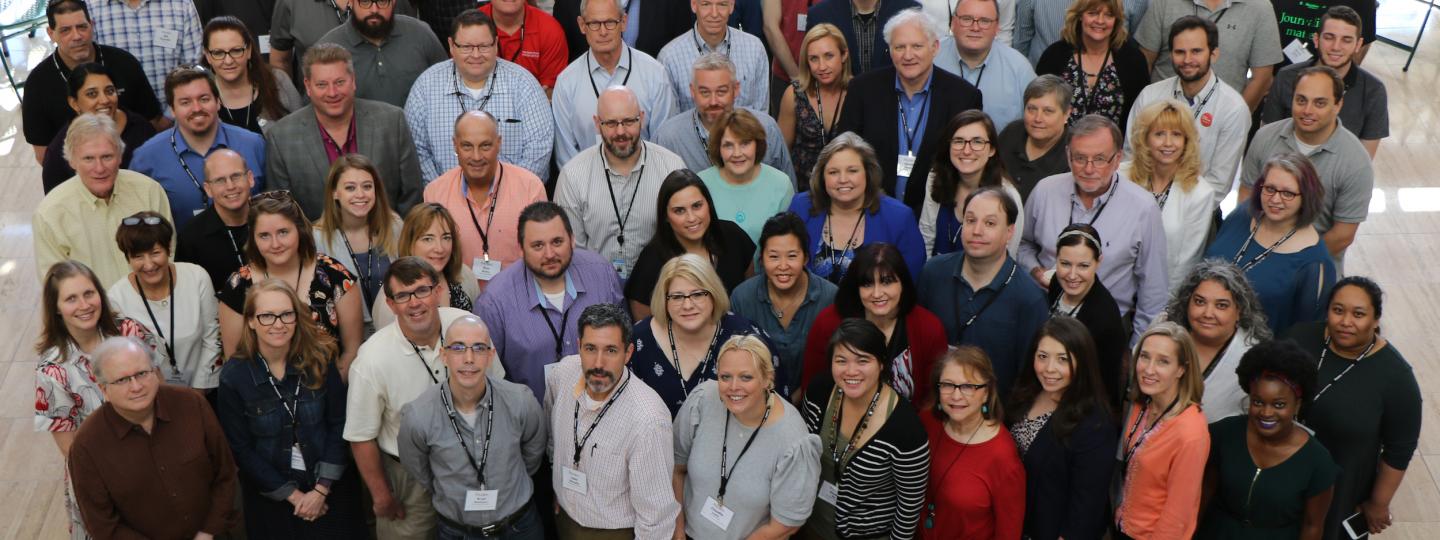Four news leaders have some change-leading advice for their peers: Your behavior and how often you communicate are crucial.
Twenty news organizations involved in a Poynter Institute program last year learned and then used performance management practices to boost digital growth and revenue for their newspapers.
The 10-month program is called Table Stakes – a poker term meant to illustrate the stakes or standards needed to win in digital news. It’s built for all news organizations – newspaper, digital and broadcast – to focus on growing digital audiences and revenue.
Some news organizations in the 2017-2018 group focused on growing and retaining digital subscriptions; some grew revenue from events; some focused on engaging new audiences through creating newsletters or beats.
All of the leadership teams involved learned and used performance management practices such as goal-setting, experimenting, intensely measuring their results and adjusting their strategies along the way.
The Table Stakes principles and practices around leading change have been tested for three years by small and larger news organizations across the country. In the Poynter Institute’s version of the program, funded by the Knight Foundation, participating news organizations get coaches, peer group advice, webinars and in-person training.
Two editors and two publishers who went through Poynter’s program in 2017 share their advice for leading change in news organizations:
Mitch Pugh, editor of The Post and Courier in Charleston, South Carolina:
-
From a newsroom perspective, are you talking about the right goals and metrics? Is your beat structure aligned with readers’ interests and how they live their lives? How are you going to change when you understand that answer is no?
-
A small number of dedicated, energetic people can achieve huge things. Don’t let the size of your organization stop you.
-
Setting goals is great, but continuously tracking and holding teams accountable is critical.
-
At first, not everyone in the organization will get it. You will have to repeat the strategy, tactics and key measurements over and over again. You want to get to the point where everyone can recite what you are about to say. And then you want to keep saying it.
Pat Richardson, publisher of The Day in New London, Connecticut:
-
Make sure your leadership team is on board. You start with them. They need to understand what you want to accomplish. You can’t be pulling that team along. Make sure your leaders are running beside you.
-
When you’re experimenting, you’re not always going to have a win. You can’t dwell on that. I don’t really even call it failure; I call it a learning point.
-
The best time to start a change like this is now; everything is changing around us. Consumer behavior and cultural norms are changing. We can’t maintain or stand still. Journalists want hope now; they want to move forward.
Deborah Henley, editor of Newsday in New York:
-
I’ll support what others have said: You come out of this understanding the great importance of communicating. Even before the program began, we started having coffees with people, and that created an expectation.
-
The (Table Stakes) program’s language of design-and-do and then fail fast encourages experimentation. We made sure that we highlighted those successes. The working committees we set up also helped us reinforce that we’re all in this together. We’re going to figure this out together.
-
The key is to take a lot of time (as a leader) to talk about what we’re gaining from this. When we can share what we accomplish or you can show what happens with focusing on an audience, you can show that progress. It’s important to be the cheerleader of that and the one who connects it to the place we live and what we care about. There is a point where it clicks for everyone.
Scott Stanford, publisher of the Lawrence Journal-World in Lawrence, Kansas:
-
I found it critical that I take an active role in supporting the program from the start. I sent out regular updates (including to all newspaper employees as well as up the chain to ownership and corporate leadership), adjusted schedules when we miss deadlines and acted as a persistent cheerleader for the process. If my team knows it matters to me, then it matters to them. Without consistent and committed leadership from the top, it runs the risk of failure when it gets hard. And it does get hard.
-
Finally, it’s key for leadership to understand that the benefit of the program is really learning, understanding and implementing the Table Stakes (change) process. If you think of this as a one-year project, you’ve missed the opportunity. Our year in the program was as much about learning how to implement as it was about accomplishing any specific goal. We are well positioned now to really make progress.
-
Table Stakes isn’t a project; it's a cultural shift within the organization.
If you’re interested in Table Stakes, check out the application here.







